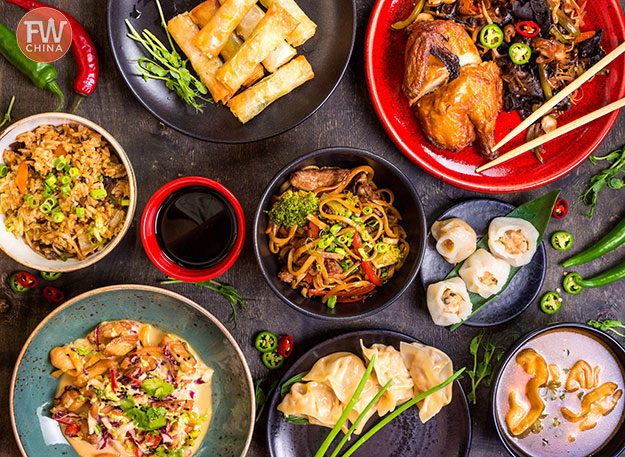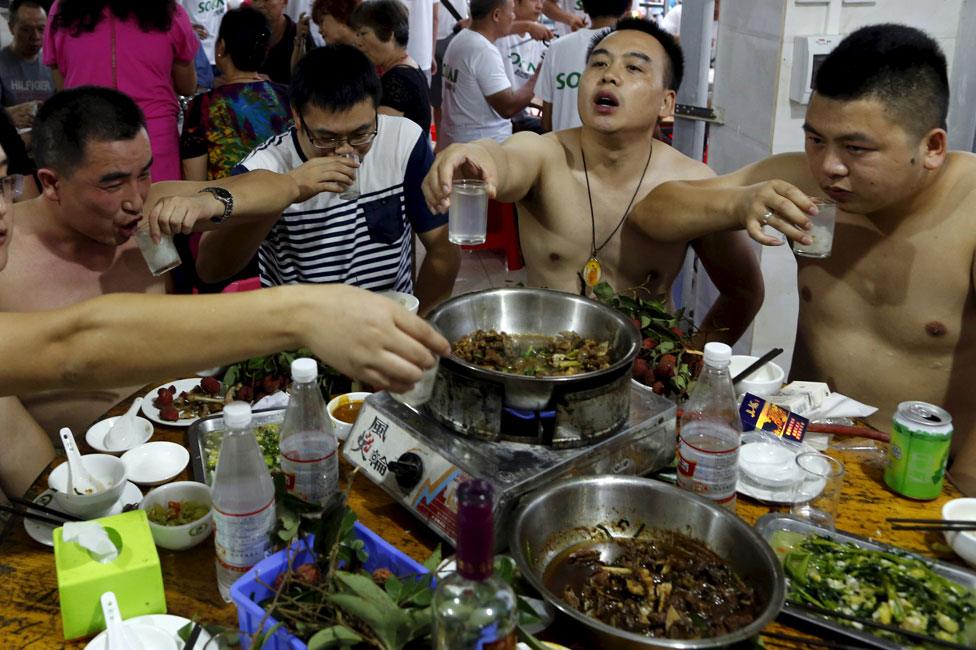20 Great Reasons To The Flavors of Chinese Cuisine
20 Great Reasons To The Flavors of Chinese Cuisine
Blog Article
Top 10 Tips On Bargaining Etiquette When Shopping In China
1. Tip: Try to negotiate higher by starting low and being courteous. Be firm but polite to show that you're serious.Pro: It allows you to establish your relationship with the seller, without offending them.Cons A low start can frustrate sellers of items with lower margins.
2. Know the Market ValueFind the price that is typical for the item you are looking to purchase.Pros: Prevents fraud and increases confidence in negotiations.Cons: Finding unique or handmade items can take time, especially if they are not easily accessible.
3. Show Genuine InterestTips: Sellers are more willing to negotiate if they think that you are truly interested in purchasing.Pro: It creates trust and improves your chances of getting the best deal.Con: Your overenthusiasm could be interpreted as a willingness or a desire to pay more. This can reduce your credibility.
4. Walking AbsentlyTip: If it isn't possible to notice a price reduction then take your time and walk away. Sellers may call you back with a higher price.Pro: A highly effective tactic that can often result in the lowest cost.Con: The seller might not be able to reduce the price of certain items, especially those in high-demand.
5. Learn Basic Mandarin PhrasesTip: Phrases like "Tai gui le!" (Too expensive!) "Pianyi Yadian Ba" (Can it be cheaper?) The effort is needed.Pro: Personalizes the negotiations and softens the seller’s stance.Con: The use of limited phrases may not be helpful in more complex negotiations.
6. Be patient and calmNegotiations may not be quick. Be calm to avoid coming across as desperate.Pro: Sellers reward calm and persistent buyers with better deals.Cons: It takes time and energy to complete, particularly in busy markets.
7. Bring CashTip: Sellers could be more willing to reduce prices for cash payments instead of digital methods.Pro: Cash offers made immediately can secure discounts, especially with smaller vendors.Contraint: Carrying cash may be risky in crowded markets because of pickpockets.
8. Discounts on Group BookingsTip: When buying multiple items, you can request a discount price.Pro: You can boost your bargaining power and secure a better deal.Cons: You may need to purchase more products that don't always meet your needs.
9. You don't need to be scared to say no.Tips: Politely decline the offer when the seller doesn't agree to reduce the price.Pro: It helps avoid buyers' remorse. It also ensures you are in your financial limits.Pro: Don't let yourself miss out on something that you truly want.
10. Be aware of when not to bargainAvoid bargaining in supermarkets departmental stores and luxury stores.Pro: Maintains cultural sensitivity and avoids embarrassment.Con: Some settings limit your ability to negotiate.
Bargaining in China offers advantagesSaves Money: Negotiating can dramatically reduce the cost of items.Cultural Experience: Participating in bargaining can provide insight into local traditions and customs.Personal Interaction: Forms a connection with local sellers.Pros and Cons of Bargaining in ChinaHaggling can be time-consuming for shoppers who are new especially.Language Barrier: Communication issues may arise without basic Mandarin.Bargaining can be stressful for some people.Learning these techniques will enable you to haggle confidently in Chinese markets. Take a look at the top a taste of China best local foods for blog tips including explore local Chinese cuisine, a deep dive into China food culture, a guide to eating like a local in China, the flavors of Chinese cuisine, savor China regional food specialties, savor the flavors of China, Chinese food you must try, China food heritage revealed, uncover China food traditions, a taste of China best local foods and more.
Top 10 Tips To Visit The Temples Of Fame During Seasonal Visits In China
1. Visit in the off season Tip for Autumn/Winter: If you plan to visit renowned temples in the off-season (autumn/winter) that is usually between November and February, think about visiting them during the off season. This is the time when there are fewer tourists and the temperature is cooler.
Pros: It's quieter and provides a more tranquil experience.Con: The weather might be colder than usual, which could make outdoor temple tours less enjoyable.2. Prepare for extreme weatherTip: Temperatures may be extremely different in the various seasons. Winters can be extremely cold while summers become scorching. Be prepared.
Pro: Your visit will be comfortable and enjoyable since you'll be well-prepared for any weather.Cons: It can be difficult to pack for extreme weather conditions, especially when you're traveling in a small amount.3. Visits to Vibrant Flora in the spring and the summer months.Tips: If you visit temples in the spring and summer You can take in beautiful gardens with blooming flowers and lush landscapes.
The temple grounds are a must for breathtaking views.Con summers can be very hot and packed at holidays, particularly the national ones.4. Take into consideration festivals, special events, and Other ActivitiesTip: Plan your visit to coincide with traditional holidays like Chinese New Year (January/February) or the Mid-Autumn Festival (September). This is the best time to visit a temple since it offers special rituals and ceremonies.
Pro Temples are usually bustling and filled with traditional celebrations, providing the most unique experience.Con: Temples can be very crowded during times of festivals, and costs of accommodation may increase.5. Avoid Peak Holiday SeasonsTips Refrain from visiting during most popular tourist times (e.g., Chinese New Year, Golden Week in October) when temples can be packed with local and international tourists.
Pro: A more tranquil experience without the crowds.Con: You may not be able to catch some of the special events if you're there during peak hours.6. Check for Temple Closures in WinterTips: Some temples might shut down or operate with restricted timeframes during winter, especially when they are located in the remote areas or the northern regions. Be sure to check before visiting.
Benefits: Reduces the need for unnecessary trips and allows you to schedule other activities ahead of time.Con: Some temples might have hours that are reduced or completely closed during repairs, which can lead to disappointment.7. Early Morning Visits in the summertimeBe sure to arrive early when you plan to visit during the summer months to avoid the scorching heat at midday. Many temples open their doors early in the morning. The air is quieter and there are fewer visitors.
The cooler temperatures and absence of crowds make for a more relaxing vacation.Con: Might not be suitable for everyone.8. Be Prepared for Rain in the summer.The summer can bring heavy rain, particularly to the southern part of China. Bring rain gear and an umbrella for trips during summer.
Pro: Even in rain, you can enjoy the beauty of the temple.Con: Rain could affect outdoor activities, or cause the grounds of temples slippery.9. Visit Temples within the Mountainous Areas in AutumnTips: Autumn is the perfect season to go to temples in mountainous regions (e.g., Mount Wutai or Mount Emei) as the weather is pleasant, and the autumn leaves create stunning sceneries.
Pros A cool climate allows to enjoy more comfort while walking or hiking while you take in spectacular views.Con: Temples that are popular in the mountains still draw crowds on holidays and weekends.10. You can use the lunar calendar to plan particular eventsTIP: Many temples, specifically in China, follow the lunar Calendar. That means some events and rituals have a lunar date. Check out the calendar for important events such as the Lantern Festival, Buddha's Birthday and other temple events.
Pros Unique cultural experiences and deeper understanding of the local practices of spirituality.Cons: It can take extra planning time and research to match your travel dates to the lunar calendar.The Benefits of Going to Chinese Temples during the seasonLess crowds during off-season visits are a quiet and reflective experience.Festivals are a great opportunity to get immersed in the traditions of religion and culture of your local area.Scenic Beauty - Spring and autumn are the best times to visit. It is possible to enjoy stunning landscapes as well as vibrant gardens in temples.Cooler temperatures The autumn and winter are the best times to visit temples.Pros and Cons of Seasonal Trips to Chinese TemplesUnpredictable weather: The winter could be extremely cold, and summer can be too hot. This can affect your comfort.Temple Closures: Some temples will close in extreme weather or when they are operating with only a few hours.People are crowded during festivals Holidays and festivals may draw large crowds making it difficult to feel the peaceful ambience of the temple.Limitations: You may miss out on certain seasonal events or celebrations if your visit is not within the appropriate timeframe.Select the appropriate time of year for visiting China's most well-known temples and plan accordingly. This will ensure you'll have an unforgettable experience. Understanding the seasonal dynamics of the temples will enable you to get the most out of your time there, whether you're seeking peace or cultural celebrations. Read the top rated culinary wonders of China for more examples including China flavorful food culture, Chinese food you must try, explore the best local eats in China, a taste of China best local foods, discover China culinary delights, taste the regional flavors of China, taste the regional flavors of China, journey through China food culture, discover the tastes of China cities, journey through China food culture and more.